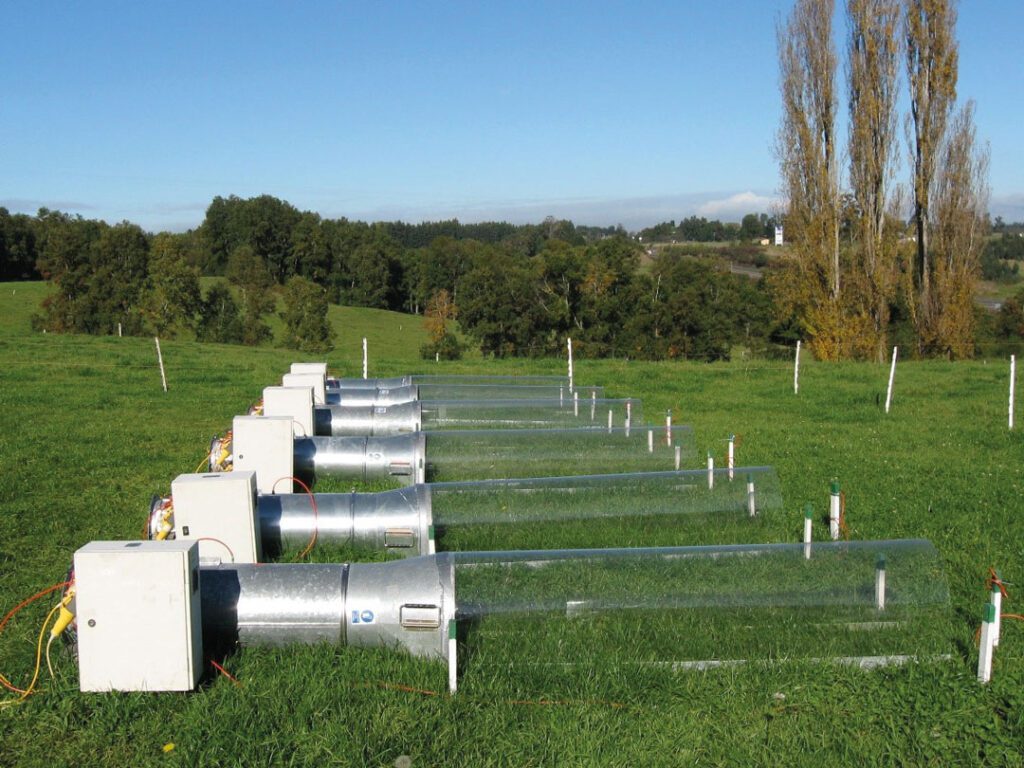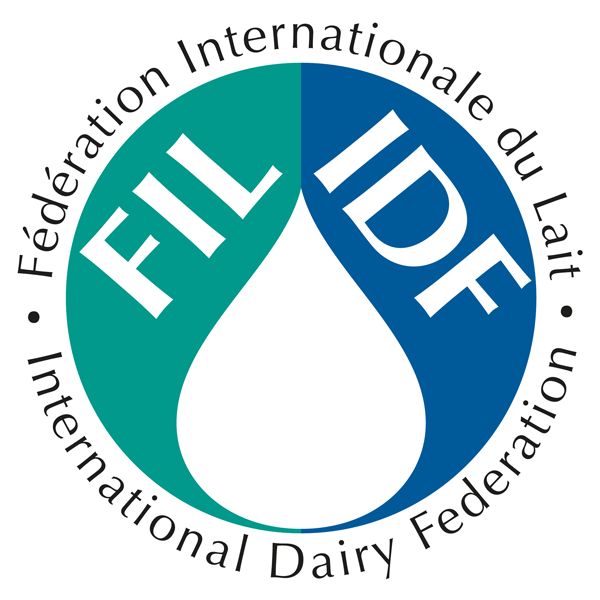Share this page
Ammonia volatilisation following surface application of dairy slurry and urea on permanent on grasslands of Southern Chile

Alignment with SDGs
AUTHOR
Francisco Salazar S.1, Marta Alfaro V.1, Josué Lagos M.1, Tom Misselbrook2
1 Instituto de Investigaciones Agropecuarias, Centro Regional de Investigación INIA-Remehue, Chile; 2 Rothamsted Research, Devon, UK.
Background
Ammonia (NH3) is an important air pollutant largely emitted from agriculture. The gas is generated, among other sources, from livestock, mainly dairy and beef production systems, especially when dairy slurry or fertilizers are applied to land. There are only few studies published on NH3 volatilisation in Latin American countries, which information is a key tool for national NH3 inventories and mitigation options to be implemented (Lagos et al., 2010). In addition, NH3 is one of the most important pathways of nitrogen losses on dairy production systems, therefore mismanagement of this gas could reduce the nitrogen use efficiency and cause pollution to the wider environment.
The NH3 followed transformation, transport and deposition, can caused a wide range of environmental impacts such as soil acidification, eutrophication of aquatic systems, acid rain, disturbance of the nutrient balance in trees, loss of diversity, odours and impacts on human health (Asman et al., 1998; Sommer and Hutchings, 2001). Therefore, a reduction target in the NH3 emission has been set in European countries under the Convention on Long-Range Transboundary Air Pollution of the United Nations.
Objective
The objective of this research has been to evaluate NH3 volatilisation losses following surface application of dairy slurry or urea to permanent pastures on volcanic soils of southern Chile. A set of experiments were carried out on small plots, using wind tunnels (Lockyer, 1984) technique to measure NH3 losses under field conditions (Figure 1).

This study showed that there was a large effect of the N source on the NH3 emissions. Total NH3-N losses were higher after urea fertiliser application compared with dairy slurry
Francisco Salazar Tweet
Results
There was a large effect of the N source on the NH3 emissions. Total NH3-N losses were higher after urea fertiliser application compared with dairy slurry. During spring trial total N losses were 25.3 and 9.4 Kg N ha-1, which is equivalent to 25% and 22% of the total N applied for the urea and the dairy slurry treatment. During the autumn trials the total N losses ranging from c. 20 to 30 kg N ha-1 (c. 20 to 30 % of total N applied) and c. 6 to 8 kg N ha-1 (c. 7 to 9 % of the total N applied) for the urea and the dairy slurry treatment, respectively. In order to critically compare the different treatments, comparisons should be made of the proportion of TAN applied (N-NH4 loss/N-NH4 applied x 100). Based on this parameter, results from the present study showed that emissions were higher for dairy slurry (22% to 55%) compare to urea (20 to 30%). These values are in the range of studies carried out elsewhere (e.g. Huijsmans and Schils, 2009).
The highest peaks of NH3 emission were obtained on dairy slurry treated plots, occurring within the first six hours after manure application, declining progressively in the successive hours and becoming low after the first 24 hours after application. This resulted, for all the experiments, in a high proportion of the NH3-N being lost within the first 24 hours, which was equivalent to c. 53-67% of the total N loss of the experimental period in the dairy slurry treatment. For urea there were peaks during the measuring period, which were lower than the one observed with slurry. Between 49-59% of the total N loss of the experimental period was volatilised by 96 h of evaluation, which were probably associated with the transformation process of this fertiliser in the soil.
Results showed that ammonia emissions from slurry and urea can be one of the most important pathways of nitrogen loss when applied to acid volcanic soils of southern Chile (Salazar et al., 2012, 2114). The volatilization of NH3 could affect the efficiency of the N fertilizer affecting the forage dry matter production in pastures and increasing the management costs for the farmers. Therefore, good management practices on these swards should target the reduction of losses through volatilisation. Low emission slurry application equipment is now available (e.g. Misselbrook et al., 2002) but, it is necessary to increase the adoption of these ‘environmentally friendly’ technologies by farmers. In addition, it is important to consider that the use of this equipment could represent an increase in the application costs for farmers. Incorporation of Best Management Practices (e.g. more efficient equipment) could reduce N losses due to NH3 volatilisation and increase dry matter yields, which will have benefices from economic and environmental point of view.
Acknowledgments
This research was funded by the Scientific and Technological Research Council (FONDECYT), projects 1080368 and 1151078.
References
- FAO (2018). Livestock Environmental Asman, W., M. Sutton, and J. Schjorring. (1998). Ammonia: Emission atmospheric transport and deposition. New Phytol, 139, 27-48.
- Huijsmans, J. and Schils, R. (2009). Ammonia and nitrous oxide emissions following field-application of manure: state of the art measurement in the Netherlands. International Fertiliser Society Proceedings Nº 655 (United Kingdom). 37p.
- Lockyer, D. (1984). A system for the measurement in the field of losses of ammonia through volatilization. J. Sci. Food Agric., 35(8), 837-848.
- Lagos, J., Salazar, F., Alfaro, M., Misselbrook, T. (2010). Inventory of ammonia emissions from the livestock production in Los Lagos and Los Ríos Regions, Chile. Chilean Journal of Agricultural Research, 70, 95-103
- Misselbrook, T., Smith, K., Johnson, R. and Pain, B. (2002). Slurry application techniques to reduce ammonia emissions: Results of some UK field-scale experiments. Biosystems Engineering, 81, 313-321.
- Salazar, F., Martínez-Lagos, J., Alfaro, M. and Misselbrook, T. (2012). Ammonia emissions from urea application to permanent pasture on a volcanic soil. Atmospheric Environment, 61: 395-399
- Salazar, F., Martínez-Lagos, J., Alfaro, M. and Misselbrook, T. (2014). Ammonia emission from a permanent grassland on volcanic soil after the treatment with dairy slurry and urea. Atmospheric Environment, 95: 591-597
- Sommer, S. and N. Hutchings. (2001). Ammonia emissions from field applied manure and its reduction. Eur. J. Agron., 15, 1-15.






